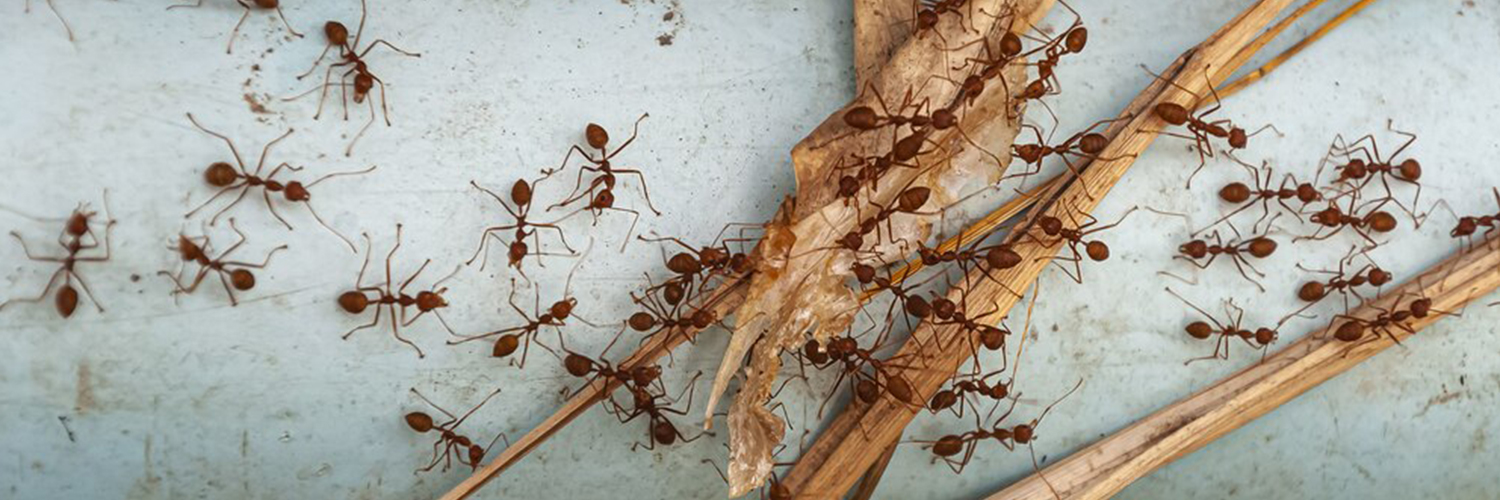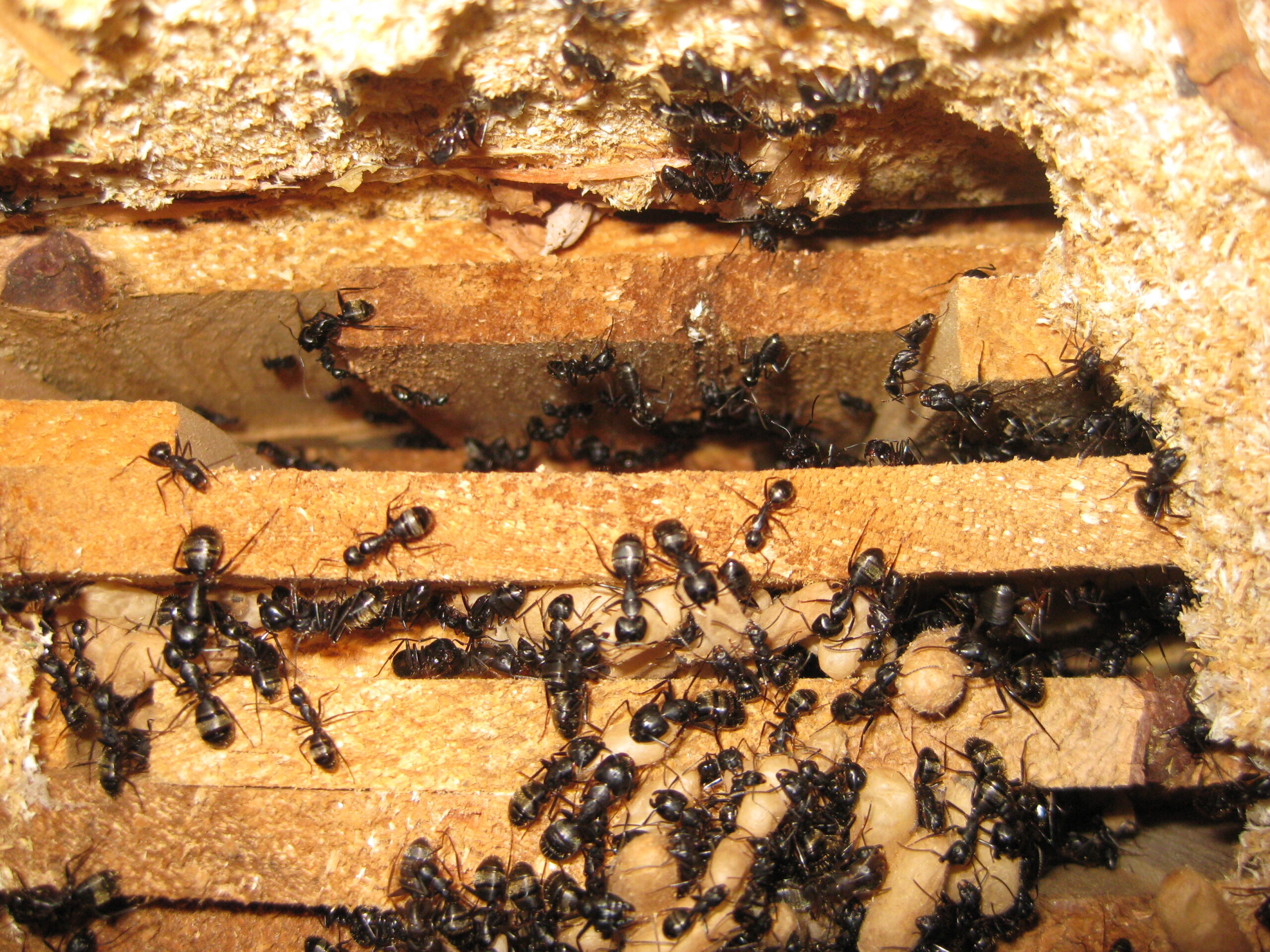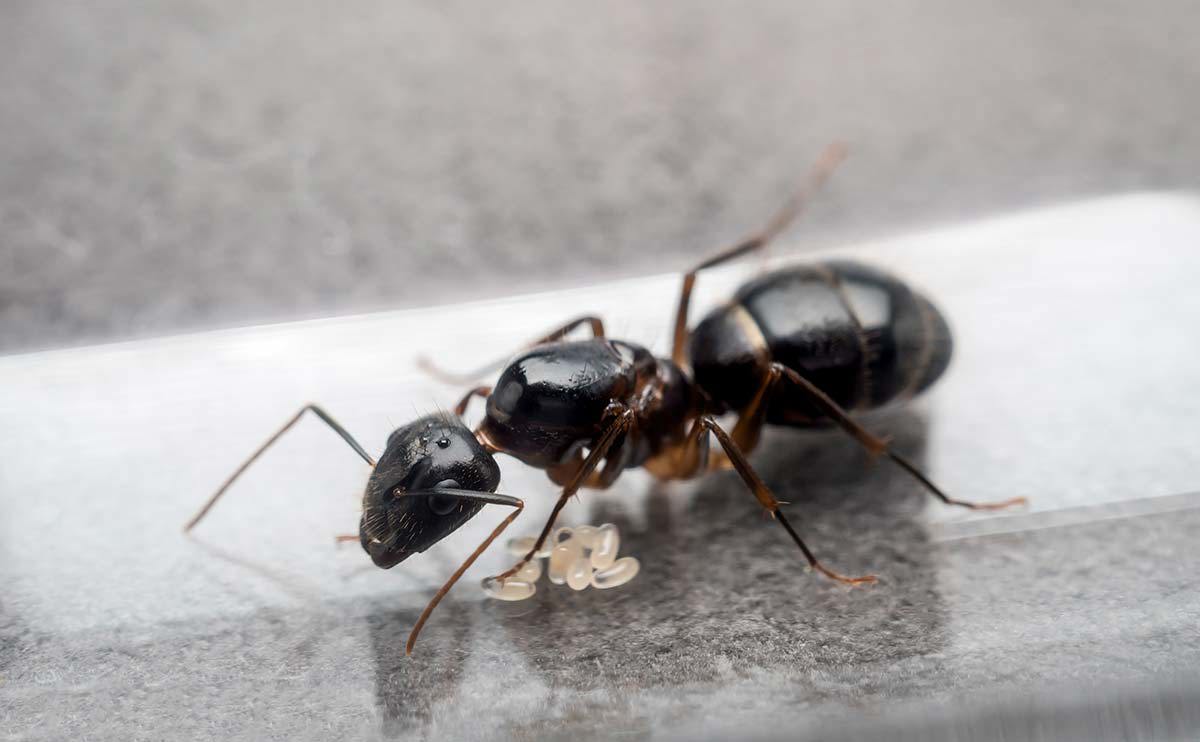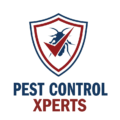Ant Extermination Services in Fort Pierce
Controlling Florida’s Most Persistent Pests Year-Round
Fort Pierce is known for its scenic waterfront, historic downtown charm, and sunny subtropical climate that draws visitors and new residents alike. Yet, while mild temperatures and ample sunshine make the area a paradise for people, they also create ideal conditions for ants to thrive. Whether you’ve spotted a few ants wandering around your kitchen or you’ve encountered large mounds overtaking your yard, understanding why ants flourish in Fort Pierce – and how to address them – is key to keeping your property pest-free.
This service page explores the most common ant species you might face in Florida, how these tiny invaders gain a foothold, and what steps you can take to reclaim your home or business from an infestation. We’ll also include insights for residents of Vero Beach, a neighboring community with a similar subtropical environment. By learning how to identify and eliminate ants effectively, you’ll be well on your way to enjoying a clean, comfortable space year-round.
Why Florida’s Climate Favors Ants

Ants adapt quickly to environments that supply the essentials: warm temperatures, regular moisture, and easy access to food. In places like Fort Pierce:
- Mild Winters
Ants in colder regions often die back or enter a dormant stage when freezing temperatures arrive. In Fort Pierce, the winter chill is rarely severe, allowing ants to keep reproducing and foraging throughout the year. - High Humidity
The combination of Atlantic breezes and frequent rainfall ensures consistent moisture levels in the soil and air. Ants depend on water for survival, making Florida’s humid atmosphere especially appealing. - Abundant Food Sources
From leftover crumbs on the patio to abundant vegetation producing nectars and seeds, ants can find meals in many forms. Homes, restaurants, and open trash bins also provide a reliable buffet. - Dense Vegetation
Lush yards, ornamental shrubs, and palm-lined landscapes don’t just look beautiful; they offer countless nesting sites for ants. Overgrown gardens or thick mulch beds near a building’s foundation provide hidden corridors that ants may use to migrate indoors.
In such conditions, even a small colony of ants has everything it needs to expand rapidly.
Common Ant Species in Fort Pierce (and Vero Beach)
Although Florida hosts dozens of ant species, the following six types are among the most frequently encountered by homeowners and businesses in the region:
- Ghost Ants
- Appearance: Tiny, with dark heads and pale, translucent abdomens that can make them seem almost invisible.
- Behavior: Ghost ants love sweet or sugary foods, favoring moist indoor areas like kitchens, bathrooms, and potted plants. Their small size means they can slip through the tiniest cracks.
- Concerns: While they don’t inflict structural harm, ghost ants can set up extensive colonies indoors. Their trailing lines often appear on countertops, inside cabinets, or along walls.
- Carpenter Ants
- Appearance: Large ants, typically black or red-and-black in color, measuring up to half an inch in length.
- Behavior: Carpenter ants don’t eat wood but chew through it to create nests, especially in damp or decaying timber around roof eaves, window frames, or doors.
- Concerns: Over time, tunneling can weaken wooden structures, leading to expensive repairs. The presence of carpenter ants often points to underlying moisture issues or wood rot.
- Fire Ants
- Appearance: Reddish-brown ants that usually build noticeable mounds in lawns, fields, or near sidewalks.
- Behavior: Fire ants swarm aggressively and deliver painful stings if their nest is disturbed. They prefer sunny, open locations to build their mounds.
- Concerns: Multiple fire ant mounds can render a yard unsafe for children, pets, and even adults who unknowingly step on them. Allergic reactions are also a potential hazard.
- Pharaoh Ants
- Appearance: Tiny and yellowish, often mistaken for other small ant species until closely observed.
- Behavior: Pharaoh ants are notorious for “budding,” in which the colony splits into multiple nests if threatened by sprays or partial treatments. They favor warm, humid indoor areas such as walls, behind baseboards, or near water heaters.
- Concerns: Spot treatments can push these ants deeper into hiding, making the infestation worse. Effective control typically requires carefully placed baits that workers bring back to the nest.
- Argentine Ants
- Appearance: Medium-sized, dark brown ants typically seen traveling in long, steady trails along walls or baseboards.
- Behavior: Known for forming massive “supercolonies” with multiple queens, Argentine ants reproduce quickly and thrive in moist spots like mulch beds, near dripping faucets, or under yard debris.
- Concerns: Their sheer numbers can overwhelm a property, often requiring repeated or extensive treatments to fully eradicate.
- White-Footed Ants
- Appearance: Dark-bodied ants with lighter-colored feet, giving them a distinct two-toned appearance.
- Behavior: White-footed ants frequently build large colonies in roof eaves, soffits, or within wall voids. Indoors, they forage for sweet, sugary foods.
- Concerns: While they aren’t destructive to wood, their colonies can become vast, creating noticeable trails that can be challenging to eliminate without a thorough approach.
By identifying which ant species has invaded your property, you can select a more precise and effective control strategy.
How Ants Spread and Multiply
Most ant species in Florida operate with a high level of social organization, including workers, brood, and one or more queens. Worker ants leave the nest to search for food or water, following chemical pheromone trails. When a worker discovers a suitable food source, it lays down a fresh trail on its return trip. This chemical signal encourages additional ants to follow the path, rapidly increasing the number of invaders.
In Fort Pierce’s subtropical climate, these pheromone trails remain detectable much longer than in cooler, drier regions. Moreover, some ant species maintain multiple queens within a single colony, allowing the nest to recover quickly if one queen dies or relocates. The presence of multiple queens also makes “budding” a regular occurrence, where part of the colony breaks away and forms a new nest elsewhere on the property. This resilience explains why minor ant sightings can escalate into full-blown infestations in just a few weeks.

Potential Risks of an Ant Infestation
While ants are generally more of a nuisance than a direct threat, large infestations can create several meaningful problems:
- Health Concerns
Fire ant stings can be painful and may cause welts or significant allergic reactions. Other ants that travel through trash or dirty surfaces can carry bacteria to kitchen counters, contaminating food. - Property Damage
Carpenter ants dig tunnels in wooden structures, leading to gradual weakening. Water leaks or wood rot exacerbate the issue, as damp conditions attract these wood-boring ants. - Lifestyle Interruptions
Endless ant trails in the kitchen, bathroom, or outdoor spaces can make daily activities inconvenient, discouraging you from cooking, entertaining, or even stepping foot in your yard without caution. - Business Image
In commercial settings like restaurants, hotels, or shops, a visible ant problem can deter customers and harm your reputation. Prompt, discreet ant extermination is crucial to maintaining a professional and hygienic environment.
Strategy for Effective Ant Extermination
Successfully combating ants in Fort Pierce requires a multifaceted approach tailored to both the species at hand and your property’s unique conditions:
- Inspection & Identification
- Thoroughly check indoor and outdoor areas to spot active trails, nests, or high-moisture zones that may attract carpenter ants.
- Properly identifying the species is crucial, as different ants call for different treatment methods.
- Baiting & Slow-Acting Poisons
- For ghost ants, Pharaoh ants, and other species that scatter easily when sprayed, baits are often the best choice. Workers carry lethal food back to the colony, wiping out queens and brood over time.
- Fire ant baits target mounds scattered across a lawn, gradually killing off the colony from within.
- Non-Repellent Sprays
- These products are undetectable to ants, allowing them to traverse treated surfaces and bring the toxin back to their nest. This method is especially effective for Argentine ants or carpenter ants when applied along trails or near key entry points.
- Mound Treatments
- Specifically for fire ants, direct mound applications with insecticidal granules or drenches can subdue aggressive colonies. Care must be taken to fully saturate the mound so the queen is not driven deeper underground.
- Eliminating Pheromone Trails
- Wiping down counters, floors, and baseboards with standard household cleaners or diluted bleach solutions can neutralize ant scent trails, discouraging new scouts from re-establishing the same paths.
- Sealing Entry Points
- Repairing cracks in the foundation, fixing window screens, or applying caulk around door frames prevents ants from easily moving indoors.
- Addressing leaking pipes or other water sources is also key, as many ants seek out moist conditions.
- Follow-Up and Maintenance
- After significant infestations, follow-up checks help ensure no satellite nests or hidden queens remain.
- Maintaining a clean environment, promptly fixing leaks, and storing food in airtight containers reduce the likelihood of reinfestations.
Prevention Tips for a Pest-Free Home
Prevention plays a vital role in avoiding future ant problems once you’ve completed an extermination plan:
- Promptly Clean Spills
Even minor spills or crumbs can attract ants. Wipe up sugary liquids and sweep floors regularly, particularly in areas where ants have appeared before. - Store Food Securely
Use sealed containers for pantry items such as cereals, grains, and sugar. This blocks ants from easy meals and minimizes enticing aromas. - Manage Trash Responsibly
Keep outdoor garbage bins firmly closed, and clean them periodically to remove residue. Indoor trash cans should also have lids and be emptied often. - Tidy Landscaping
Overgrown vegetation near your home’s exterior can encourage ants to nest close by. Trim shrubs or tree branches touching the roof or walls, and clear away leaf piles or mulch that remain damp.
Inspect Potted Plants
Ghost ants and other moisture-loving species sometimes build nests in the soil of potted plants. Periodically check beneath pots or in their drainage trays for signs of ant activity.

Extending Coverage to Vero Beach
While Fort Pierce stands as our primary focus, the environmental factors that encourage ant growth also apply to nearby Vero Beach. Known for its cultural attractions, beautiful beaches, and upscale residential communities, Vero Beach shares the same subtropical climate that makes ants a constant presence. Whether you own a seaside property or a home further inland, you’ll likely face many of the same challenges:
- Waterfront Properties: High humidity and brackish or freshwater environments create moist soil, inviting ants to establish colonies.
- Lush Landscaping: Manicured lawns and gardens near the water can lead to frequent interactions with ants, which find nesting options in thick mulch beds or behind shrubbery.
- Seasonal Residents: Many Vero Beach homeowners split time between multiple residences, which can leave properties temporarily unmonitored—an ideal situation for unchecked ant growth.
The same combination of thorough inspection, targeted treatments, and preventive upkeep applies in Vero Beach as it does in Fort Pierce. By addressing ant-friendly conditions promptly, you can mitigate infestations before they spiral out of control.
Signs You May Need Professional Assistance
Although smaller ant issues can sometimes be resolved with do-it-yourself baits and good housekeeping, certain indicators suggest calling in specialized help:
- Recurring Infestations: If ants persist despite your best efforts, there may be multiple queens, hidden satellite nests, or abundant attractants you haven’t located.
- Carpenter Ant Damage: Piles of sawdust or hollow-sounding wood around windows, doors, or beams indicate a colony tunneling through structural elements. Left unchecked, this can cause serious harm.
- Fire Ant Mounds Everywhere: Large or numerous mounds in the yard can be dangerous, especially for children or pets. Professionals often use stronger, more targeted approaches to eliminate them.
- Commercial Settings: Businesses, restaurants, and public facilities can’t afford to let ants create unsanitary conditions or disrupt customer experiences. Timely, thorough extermination preserves the business’s reputation.
Professional exterminators bring advanced knowledge of ant species, potent tools, and proven methods. They can identify the root cause of your ant problem and suggest changes to prevent future invasions.
Creating an Ant-Free Zone in Fort Pierce (and Vero Beach)
Living in Florida’s warmer regions means coexisting with a variety of pests, ants chief among them. However, by being proactive—understanding which species inhabit your space, removing easily accessible food or water sources, and sealing off entry points—you can limit ant activity significantly.
- Stay Attentive: Monitor your home for early signs of ant scouts or trailing lines. Quick action can prevent small issues from exploding into major ones.
- Maintain Cleanliness: Wiping down surfaces, properly storing food, and disposing of trash promptly keeps ants from finding a reason to linger.
- Address Moisture: Fix leaky faucets, ensure AC drainage lines work correctly, and eliminate standing water in the yard to deter moisture-seeking ants.
- Consult Experts When Necessary: Chronic infestations, potentially destructive species like carpenter ants, and major fire ant problems typically warrant professional solutions.
Whether you’re relaxing by the St. Lucie River, frequenting local restaurants, or enjoying the pristine beaches around Vero Beach, taking these steps can help ensure your property remains yours and not a haven for countless ants. With consistent vigilance and targeted ant extermination strategies, you’ll be able to savor Florida’s sunny climate without the unwelcome six-legged crowds.
